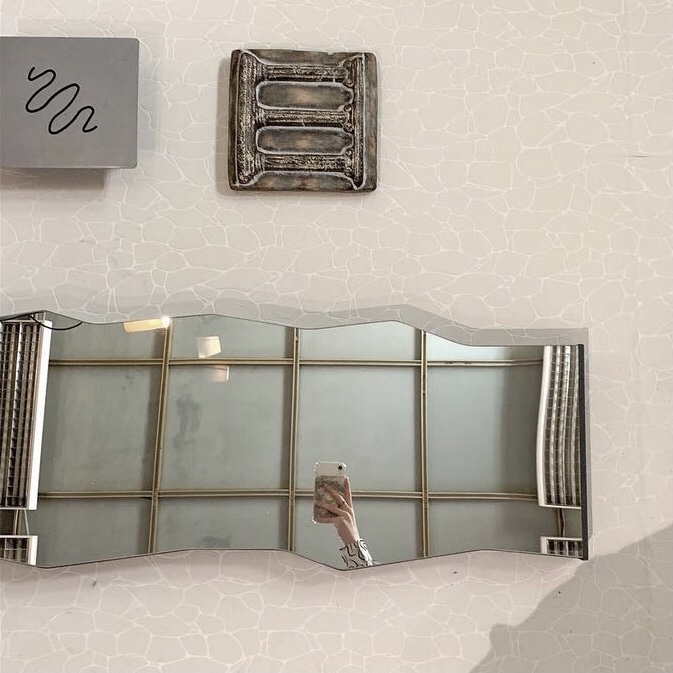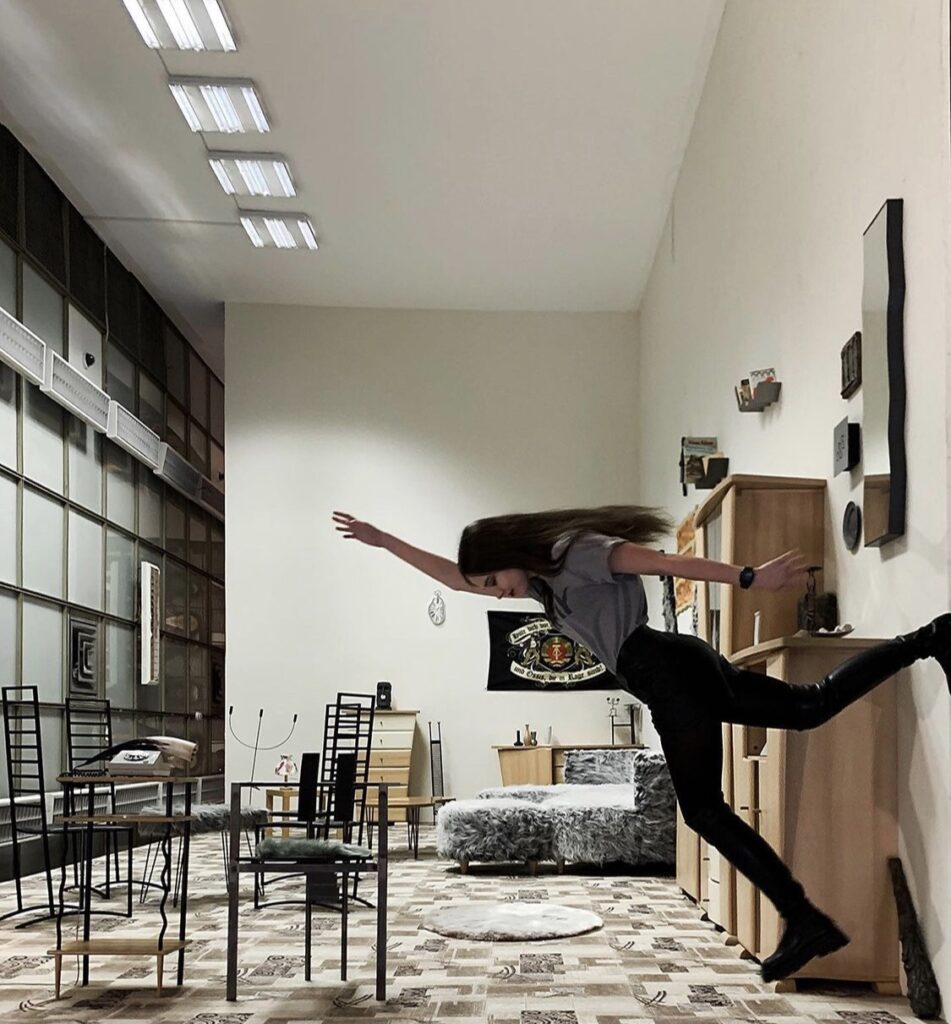
Kyiv, Ukraine 2022
Art and War
Written on 17. February 2022
For the past two weeks, I’ve been mostly online. I held my breath while reading the news about the escalating conflict between Ukraine and Russia. And I’ve been looking on social media at the selfies taken at the two exhibitions I’m currently participating in parallel in Kyiv and Moscow. I see my work as a way to cross contexts and borders and communicate in places where dialogue is difficult or impossible. When I see young people in both countries engaging with the works, exchanging messages with me and liking pictures of visitors from the other country, I understand why I do such exhibitions – for the audience.
It is not an easy undertaking to reach people in places where there is isolation, oppression, political unrest, and even war. Therefore, I have to carefully consider whether and what compromises I am willing to make for such an exhibition. But all artists who have ever participated in an international biennial inside or outside the “Western hemisphere” know these trade-offs, because all exhibitions are more or less embedded in the power structures of global capitalism. Questions of funding, political instrumentalization, and power are always at play. How can an exhibition be realized in countries where people are oppressed, imprisoned or killed? In cooperation with the state? With an oligarch? Or with a German institution, a ‘foreign agent’?

In Germany, a heated and important debate is currently taking place about the self-proclaimed “Kunsthalle Berlin”. In an open letter, artists and curators give a detailed insight into the “Smerling system” and its intertwining with politics and business: Who Owns the Public? There is also a series of well-researched articles on the subject by Niklas Maak for the FAZ (all in German). However, it is not only the so-called “Kunsthalle” that is under criticism, but also the traveling exhibition “Diversity United”, in which I am involved with my work “Ostalgie” and which is currently being shown in Moscow. Like many other artists, I have already withdrawn my work from the exhibition for further stops, although not publicly until now. But why did I participate in the exhibition in the first place, even though the political implications were transparent to all participating artists from the outset?
The answers to this question are as manifold as the artists participating in the show. One might be to type in the location Новая Третьяковка (New Tretyakov Gallery) on Instagram, where hundreds of images are shared every day featuring works by artists such as Wolfgang Tillmans, Gilbert & George, Sanja Iveković, and Šejla Kamerić. Young people from Moscow and all over Russia pose in front of political works that are extremely rare to see in today’s Russia. These visitors were born between the 1990s and 2000s, they know Russia only under Putin. Since the outbreak of the pandemic two years ago, they are no longer allowed to travel to Western Europe. The curators in Moscow tell me that it means a lot to the young audience to be able to see these works, but this exhibition in Moscow is also an important concern for many of the artists involved. Finding a way to Russia and presenting a work there that deals with political system changes was the goal of my participation in “Diversity United”. I achieved this goal and consciously made a compromise to do so.

The Tretyakov Gallery is a state museum. The curators succeed in realizing important international exhibitions under difficult political conditions. It is important to understand that a moralizing use of the name Putin in connection with an exhibition in Russia would mean in consequence that it is per se immoral to exhibit a work in a museum in Russia. What does that mean for me as an artist? Am I boycotting the public in places of oppression, where collaboration with state institutions would tarnish my “clean” moral image as a political artist?
This exhibition is special in that many artists from the former “Eastern Bloc” are participating with their works. They live and work in countries like Russia, Ukraine, Bosnia and Herzegovina, Kosovo, Poland or Bulgaria. Not only do they share a common socialist past, but they are also very aware of the political entanglements of artists with state institutions and political agendas, perhaps more so than those who work mainly in Western institutions.

As the Kunsthalle fiasco and the open letter by Hito Steyerl, Clemens von Wedemeyer and Jörg Heiser make very visible, these institutions are also embedded in power and interest structures. Why do private interest groups organize events on this scale and thus act as democratically non-legitimized actors in foreign cultural diplomacy? What alternatives can be created so that in the future artists who want to exchange with artists and audiences in politically isolated or dictatorially organized states can do so in a different framework? Will the Foreign Office change its policy and work exclusively directly with publicly legitimized organizations such as the Goethe Institut or ifa (Institut für Auslandsbeziehungen), which have the necessary expertise in art and foreign policy? And would this answer all the future questions artists have to ask themselves for every project they consider?

Defining oneself as a political artist can mean several things at once. It can mean boycotting a shady art space in your own city to fight for the rights of the art scene to affordable studios and exhibition spaces. It can also mean standing up for the possibility of showing exhibitions in dictatorial systems in the midst of war. To put these things in opposition to each other, where artists are asked to choose either this side or that side, for us or against us, on the one hand fails to recognize the complexity of the world in which we all live and work. On the other hand, the debate that has now been initiated – beyond simplifications and polarizations – could point to new ways in which we as artists can not only criticize the power structures that surround us, but also break them up.